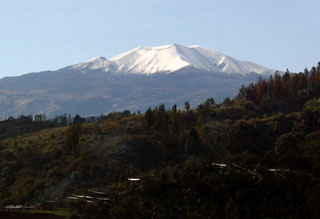Report on Purace (Colombia) — April 1977
Natural Science Event Bulletin, vol. 2, no. 4 (April 1977)
Managing Editor: David Squires.
Purace (Colombia) Another ash emission seen on 25 March
Please cite this report as:
Global Volcanism Program, 1977. Report on Purace (Colombia) (Squires, D., ed.). Natural Science Event Bulletin, 2:4. Smithsonian Institution. https://doi.org/10.5479/si.GVP.NSEB197704-351060
Purace
Colombia
2.3095°N, 76.3948°W; summit elev. 4650 m
All times are local (unless otherwise noted)
The eruption of a black and gray ash cloud began at 0545 on 19 March from two new vents. Fine gray ash was deposited as far as 7 km away. The volcano was visited a few days later by Guillermo Cajino, who noted a small tremor and rumbling noises while 5 km from Puracé at 2300 on 24 March. The next day, he observed the emission of a gas column from the two vents, which scattered ash SE over the flanks. By 28 March the fume clouds rose only 200 m.
Geological Summary. Puracé is an active andesitic volcano with a 600-m-diameter summit crater at the NW end of the Los Coconucos Volcanic Chain. This volcanic complex includes nine composite and five monogenetic volcanoes, extending from the Puracé crater more than 6 km SE to the summit of Pan de Azúcar stratovolcano. The dacitic massif which the complex is built on extends about 13 km NW-SE and 10 km NE-SW. Frequent small to moderate explosive eruptions reported since 1816 CE have modified the morphology of the summit crater, with the largest eruptions in 1849, 1869, and 1885.
Information Contacts: U.S. Dept. of State.

